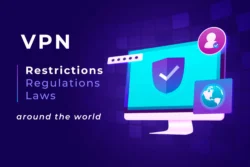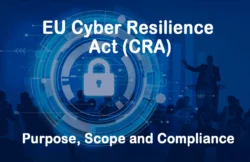In 2025, U.S. labor laws are undergoing significant changes under President Donald Trump’s second term, which began on January 20, 2025. The administration’s focus on deregulation aims to reduce costs for businesses, but it has sparked concerns about eroding protections for workers. Key areas of change include minimum wage, child labor, union rights, and immigration policies affecting the labor market. While some view these changes as necessary to boost economic competitiveness, others worry they may lead to reduced wages, unsafe working conditions, and exploitation, particularly for vulnerable groups like young workers and immigrants.
This report provides a detailed examination of the current state of U.S. labor laws, changes introduced in 2025, and their implications for employers and workers.
Federal Labor Laws: A Foundational Overview
The U.S. Department of Labor (DOL) administers over 180 federal laws, covering approximately 165 million workers and 11 million workplaces. Key statutes include:
- Fair Labor Standards Act (FLSA): Establishes minimum wage, overtime pay, and child labor standards for most private and public sector employees.
- National Labor Relations Act (NLRA): Protects workers’ rights to organize and engage in collective bargaining.
- Occupational Safety and Health Act (OSHA): Sets standards to ensure safe and healthy working conditions.
- Family and Medical Leave Act (FMLA): Provides eligible employees with unpaid, job-protected leave for family and medical reasons.
- Equal Employment Opportunity Laws: Prohibit discrimination based on race, color, religion, sex, national origin, age, disability, or genetic information.
These laws form the backbone of worker protections, but recent changes under the Trump administration are reshaping their application.
Labor Law Changes in 2025 Under the Trump Administration
The Trump administration’s labor policy in 2025 is characterized by a strong push for deregulation, as outlined in several executive orders and legislative actions. Below are the key changes:
Deregulation Initiatives
The DOL has proposed rewriting or repealing over 60 workplace regulations deemed “obsolete,” targeting areas such as:
- Minimum Wage for Specific Sectors: Regulations ensuring minimum wage for home health care workers and workers with disabilities are under review, potentially reducing wage protections.
- Workplace Safety Standards: Standards governing exposure to harmful substances are being reconsidered, which could weaken safety protocols.
- Overtime Rules: A Biden-era rule increasing the salary threshold for overtime exemptions (from $35,568 to $58,656 annually by January 1, 2025) was struck down by a federal judge in Texas in November 2024, aligning with the administration’s deregulatory stance.
An executive order signed on January 30, 2025, mandates that the total incremental cost of new regulations in fiscal year 2025 be significantly less than zero, building on a previous “two-for-one” deregulation policy from Trump’s first term. This initiative aims to reduce compliance costs but has drawn criticism for potentially compromising worker safety and rights.
Minimum Wage Reductions
On January 30, 2025, President Trump signed an executive order eliminating minimum wage protections for private sector workers on federal contracts. This affects hundreds of thousands of workers, potentially leading to pay cuts of up to 25%. Critics, such as the Center for American Progress, argue that this move exacerbates financial insecurity for workers already facing rising costs, while supporters claim it reduces government spending and business costs.
Child Labor Protections
The administration’s policies, combined with state-level proposals, have raised concerns about weakening child labor protections. The DOL’s Wage and Hour Division, responsible for enforcing child labor laws, faces staff cuts, potentially reducing enforcement effectiveness. States like Florida, Ohio, and West Virginia are considering bills to relax restrictions on minors’ employment, such as allowing longer work hours or employment in hazardous industries. Reports indicate a near doubling of child labor violations from 2011 to 2020, with concerns that 2025 policies could exacerbate this trend.
Immigration and Labor Market Impacts
The “One Big Beautiful Bill Act” (OBBBA), signed into law on July 4, 2025, includes provisions expanding immigration enforcement and deportations. These policies could lead to labor shortages in industries like agriculture, construction, and hospitality, which rely heavily on immigrant workers. Increased Immigration and Customs Enforcement (ICE) raids have created a climate of fear, potentially reducing workers’ willingness to report labor violations and increasing risks of exploitation.
Project 2025: A Conservative Blueprint
Project 2025, developed by the Heritage Foundation and former Trump officials, outlines a comprehensive anti-labor agenda, including:
- Banning Public Sector Unions: Prohibiting collective bargaining for public service workers.
- Mid-Contract Union Dissolution: Allowing employers to eliminate unions during contract terms.
- State Opt-Outs: Permitting states to opt out of federal overtime and minimum wage laws.
- Eliminating Child Labor Protections: Reducing restrictions on minors’ employment.
- Sham Company Unions: Supporting legislation to allow employer-created unions, potentially undermining worker-led organizing.
These proposals have sparked significant controversy, with labor advocates arguing they prioritize corporate interests over worker rights.
National Labor Relations Board (NLRB) Changes
On January 20, 2025, President Trump removed NLRB member Gwynne Wilcox and General Counsel Jennifer Abruzzo, appointing a new interim General Counsel. This unprecedented move, justified by the administration as addressing “neglect of duty,” has left the NLRB without a quorum to issue decisions, temporarily halting significant labor dispute resolutions. Critics argue this undermines the NLRA’s protections for collective bargaining.
State-Level Labor Law Developments
While federal policies lean toward deregulation, states are adopting varied approaches:
- California: Senate Bill 639, effective January 2025, ends subminimum wages for workers with disabilities, ensuring they earn at least the standard minimum wage. Senate Bill 1105 allows farmworkers to take sick leave during extreme weather conditions.
- Illinois: House Bill 4867 prohibits discrimination based on reproductive health decisions, and Senate Bill 3646 strengthens child labor protections by limiting work hours and prohibiting hazardous occupations for minors.
- New York: The Fashion Workers Act, effective June 19, 2025, introduces protections for fashion industry workers, including pay transparency and workplace safety.
- Nevada: Assembly Bill 112 removes exemptions for collective bargaining agreement employees from sick leave provisions, effective October 2025.
- Florida, Ohio, West Virginia: These states are considering bills to relax child labor restrictions, aligning with federal deregulation trends.
This fragmented landscape poses compliance challenges for multi-state employers, requiring tailored policies to meet diverse state requirements.
Key Legislation in 2025
The most significant legislative action in 2025 is the OBBBA, which, while primarily focused on immigration and social safety nets, has labor market implications:
- Immigration Enforcement: The act funds expanded detention and deportation, potentially reducing the labor supply in key industries.
- Social Safety Net Cuts: By limiting access to health care and nutrition aid for immigrants, the act may indirectly affect worker well-being and productivity.
Other pending bills, such as H.R. 1319, aim to clarify the standard for determining employee status under the FLSA and NLRA, potentially reverting to a Trump-era rule emphasizing worker control and profit/loss as key factors.
Benefits and Controversies
The administration’s policies are designed to reduce business costs and stimulate economic growth. Supporters, such as the Independent Women’s Forum, argue that deregulation, particularly in home health care, could make services more affordable, benefiting families. However, critics, including the National Employment Law Project and Human Rights Watch, warn that:
- Wage Reductions: Minimum wage cuts could exacerbate financial insecurity.
- Safety Risks: Relaxed safety standards may increase workplace injuries.
- Child Labor: Weakened protections could expose minors to hazardous conditions.
- Union Rights: Project 2025’s proposals could undermine collective bargaining, reducing workers’ ability to negotiate fair wages and conditions.
The debate reflects a tension between economic flexibility and worker protections, with significant implications for both employers and employees.
Court Decisions and Legal Challenges
Several legal challenges are shaping the labor law landscape:
- Overtime Rule: A federal judge in Texas struck down a Biden-era rule increasing overtime salary thresholds, maintaining lower thresholds favored by the Trump administration.
- NLRB Actions: The removal of NLRB officials is under scrutiny, with potential lawsuits challenging the constitutionality of these actions.
- State Laws: Legal challenges to state-level child labor and wage laws are ongoing, with outcomes likely to influence enforcement.
Implications for Employers and Workers
Employers must navigate a complex regulatory environment, balancing federal deregulation with varying state laws. Key actions include:
- Updating compliance policies to reflect federal and state changes.
- Monitoring legal challenges that could alter enforcement.
- Engaging with legal counsel to ensure adherence to diverse regulations.
Workers, particularly those in vulnerable sectors, face potential wage reductions, reduced safety protections, and challenges in union organizing. Advocacy groups recommend increased vigilance and reporting of violations to mitigate risks.
Conclusion
The labor law landscape in 2025 under the Trump administration is marked by significant deregulation, with over 60 regulations targeted for revision or repeal. While these changes aim to boost economic competitiveness, they raise concerns about worker protections, particularly for minimum wage earners, young workers, and immigrants. The OBBBA and Project 2025 further complicate the landscape, with potential impacts on labor supply and union rights. Employers and workers must stay informed and proactive to navigate this evolving environment, balancing economic opportunities with fair treatment and safety.
Data Table: Key Labor Law Changes in 2025
| Area | Change | Impact | Source |
|---|---|---|---|
| Deregulation | Rewrite/repeal >60 workplace regulations | Reduced business costs; potential weakening of worker protections | Economic Times |
| Minimum Wage | Elimination of minimum wage for federal contract workers | Pay cuts up to 25% for affected workers | Center for American Progress |
| Child Labor | Proposals to relax federal/state restrictions | Increased risk of hazardous work for minors | Bloomberg Law |
| Immigration | Expanded enforcement via OBBBA | Labor shortages in key industries; increased exploitation risks | NILC |
| Union Rights | Project 2025 proposes banning public sector unions, mid-contract dissolution | Reduced collective bargaining power | Maine AFL-CIO |
| NLRB | Removal of NLRB member and General Counsel | Temporary halt in NLRB decisions; potential legal challenges | Jackson Lewis |
References
- Trump’s Labor Department proposes more than 60 rule changes in a push to deregulate workplaces
- Top 10 Workplace Law Developments To Expect Under President Trump
- Trump DOL Cuts and State Bills Threaten Child Labor Protections
- The Impact of the US Election on Labor and Employment Law
- Trump’s 2025 Executive Orders
- Tracking regulatory changes in the second Trump administration
- What the Trump Project 2025 Agenda Means for Wages & Worker Rights
- The Trump Administration’s 2025 Changes to Immigration Law
- Donald Trump’s executive orders and actions, 2025
- New US Labor Secretary, Congress Should Act on Child Labor
- The Anti-Immigrant Policies in Trump’s Final “Big Beautiful Bill,” Explained
- Trump would weaken child labor protections in second term, report warns
- Fact Sheet: President Donald J. Trump Launches Massive 10-to-1 Deregulation Initiative
- Trump Just Cut the Minimum Wage for Hundreds of Thousands of Private Sector Workers







